KJ Callihan
Vegan, Plant-Based, and Cruelty-Free…What’s the Difference?

What’s the Difference Between Plant-Based, Vegan, and Cruelty-Free?
If you’re keeping up with nutritional and product-purchasing trends, you may have found a lot of people these days who are becoming vegan, and others who consider their diet/lifestyle plant-based. But what’s the difference? And aside from both labels, where does cruelty-free come in? We’ve explored some knowledgeable sites on the subject to find the answers, so come on in and and decide which best describes your diet and lifestyle choices!
First of all, let’s take a look at the true definitions of each from those who most closely align with them.
According to the The Vegan Society, “Veganism is a way of living which seeks to exclude, as far as is possible and practicable, all forms of exploitation of, and cruelty to, animals for food, clothing or any other purpose.” This means avoiding the use of leather for clothing including shoes (here’s a vegan shoe brand called “Mooshoes” for anyone who might be interested), furniture or belts, etc., as well as checking labels and doing other research on products to be sure they are not comprised of animal products in any form. That said, vegans have different reasons for their veganism, but are most would consider themselves “vegan for the animals.” They can eat as much junk food as they like as long as no animal products are involved. Vegans are known to vary in their levels of strictness and devotion to being vegan, with an occasional joking reference being made in social media to the “Level Ten Vegans” made famous by a line in a Simpsons episode about “Level Five Vegans”.
Plant-Based
A plant-based diet is comprised of whole fruits and veggies, whole grains, etc., but shuns the ingesting of animal products (for the most part – some may include a little if wild-caught or pasture-raised) and especially processed foods. They do not bother with restrictions on animal products like leather but they do avoid processed products of any kind, which would very likely include vegan meat products like Quorn meat substitutes or similar foods. Refined white sugar and bleached flour is out, as are sugary canned fruits and corn syrup-laden juices.
Although some interchangeability is possible between the two, they are each typically described as above when standing alone. They are definitely not the same thing, and should not confused as such.
Cruelty-Free
And so that brings us to cruelty-free. According to Tree Hugger, Cruelty-Free “means that the ingredients/components and final product have not been tested on animals. It refers to the testing process, not the ingredients, which means it is possible for a cruelty-free product to contain non-vegan ingredients, such as honey, beeswax, lanolin, collagen, albumen, carmine, cholesterol, or gelatin.”
The problem comes in when people who believe they are contributing to the least amount of suffering with their dollar by buying vegan-labelled products don’t realize that vegan only pertains to the ingredient list — not the testing involved with the products. So, as the vegan makeup blog Logical Harmony explains it best, “Items that are tested on animals can claim to be vegan.”
So, that being said, the most conscious consumer should probably look at products from both the vegan and cruelty-free positions if possible and seek out labeling for both on packaging. If labeling is demanded by consumers to show all of this information, we can make more informed choices on how much suffering we contribute to in the world with our dollars.
Tree Hugger advises, due to the trickiness and lack of product labeling laws across states and countries, that the following be considered:
If you know an organization well and trust them, look for their endorsement or accreditation on products instead of the “vegan” or “cruelty-free” label. For example, PETA, The Vegan Society, or other prominent names can be quickly found on products they endorse.
Making your own products at home is the best way to ensure you know what’s in it. Aside from that, product ingredient lists do not include the ingredients used in packaging, or other chemicals not required to be disclosed (i.e. known hazardous “fragrance” chemicals used in many products, as revealed by the documentary STINK)
Consider the impact of child labor and unfair labor practices worldwide when you purchase products as well. Suffering is suffering, both with animals and with other humans. Let’s make sure we look for fair-trade seals on labels as well as cruelty-free, etc. We can make a better world one purchase at a time.
- As with all my articles, consult your physician before attempting or using anything mentioned in my work to be sure it’s right for your body.
The Best DIY Homemade Beauty Masks For Healthy Skin
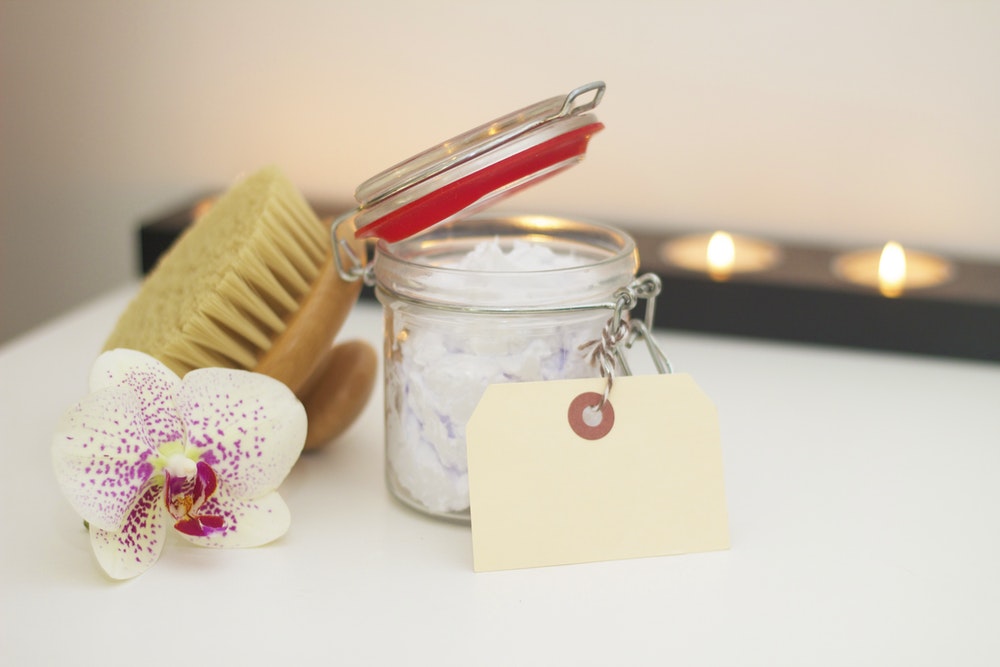
Do-It-Yourself Homemade Beauty Masks for Optimally Healthy Skin
The best beauty masks are easily made at home with simple products you have in the refrigerator or kitchen cabinet. Some of them only require two ingredients or even just one! Follow along with each video demonstration and accompanying description to see which one would be best for you to try first!
Apple Cider Vinegar Facial Toner
Although this isn’t a mask, the results you get from it outperform any mask any day. This is easily the best toner you’ll ever use – and it’s made from straight apple cider vinegar right outta your cabinet and water right outta your tap (well, some suggest purified water, so there’s that consideration too). Mix equal parts apple cider vinegar to water, and you’ve got your ACV toner! Used even by celebrities who can afford the most expensive products in the world, this is best used in the morning and evening and followed by a rinse off with clean water and a nice light moisturizer. Some prefer to add honey to the ACV before washing off. Others leave the ACV on overnight without rinsing, but that could be extremely drying for certain skin types.
Please note: if you don’t have the kind of ACV suggested in the video, the regular kind without the mother works fine in a pinch too (in my humble opinion!)
This one is best used after a test drive. Take a tiny patch of skin to try it out on first before doing it all over your face. Some people leave it on too long, scrub it in, or other actions which can harm the skin. While great for acne-prone or oily skin, this can be a bit too drying for some and should be used very rarely to not at all on others. Other than that, it’s a fantastic mask for some skin types and I hope I didn’t scare you away from trying it! Some mix it with honey or other ingredients, but it’s most easily made with just simple straight baking soda and water.
Mashed bananas applied to the face can give you a cheap face lift (some ladies have bragged about putting it in their bra cups for a couple of hours for a cheap breast lift too – but I haven’t tried that one yet!) This video includes yogurt and honey with the banana, but others have used just plain straight banana and seen fantastic results as well. Good luck with the one you choose!
This anti-aging and redness removing blend is simply equal parts oatmeal and water. Since oatmeal has softening properties, you’ve probably seen it used in many skin products designed for dry or irritated skin. After combining the oatmeal and water, blend it into a very fine texture before applying, and for best results use a makeup brush to apply gently over the skin. You’ll want to leave the mask on for 15 minutes, then gently wash off with warm (not hot) water and follow with a light moisturizer. These are best done before bed for optimal results.
These beauty masks provide a tightening of loose skin and reveal a lovely glow on the face. Many swear by these masks and insist you’ll see instant results. I probably wouldn’t choose to use this mask since starting to (attempt a) transition to veganism, but I used it before so will include it for example purposes. For the video demonstration, you’ll want to make sure you have your English subtitles on. She mixes sugar with her egg whites, but I’ve used it with straight egg whites previously too (although it doesn’t whip up well, it can be applied straight) Please remember not to use a plastic container for preparing this mask.
If you can avoid eating it, you’ll have some left for your face mask! For our final beauty mask, we’ve chosen the famous avocado mask since it’s both delicious and miraculous. You will want to choose pleasantly ripe avocados to make yours so it mashes easily and you can skip the honey if you prefer. Once you’ve applied your mashed avocado evenly to your face, wait approximately 15 minutes and then rinse off with warm water (not hot.)
*As with all my articles, please consult your physician before attempting any of these beauty masks to be sure they are right for your body or skin type
The Best Stretches for Back Pain
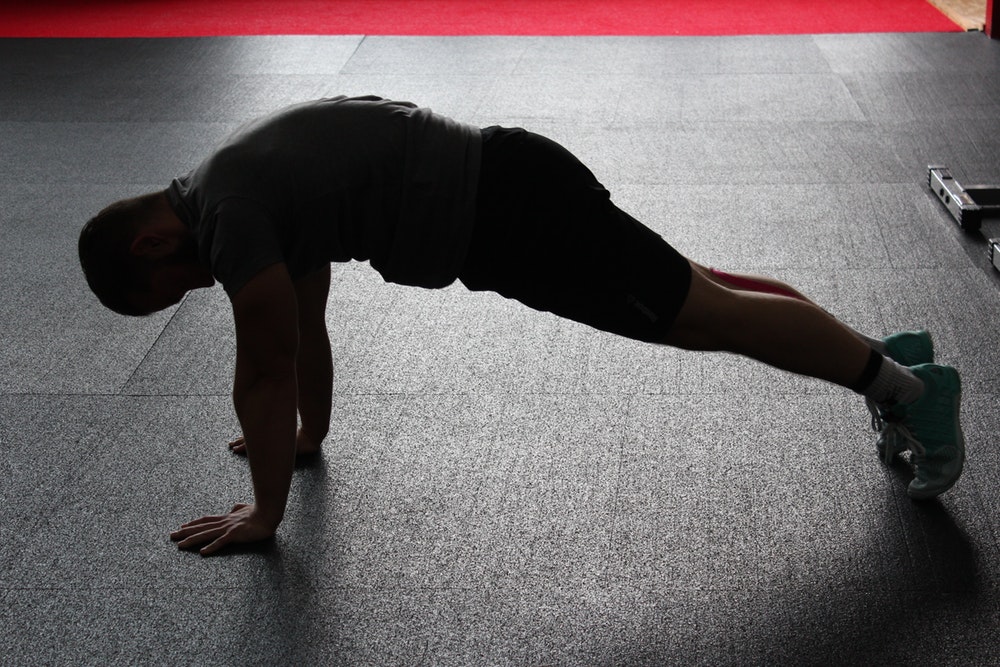
The Best Stretches for Back Pain May Vary Depending Upon the Location of or the Reason for Your Pain
Chronic back pain is the 2nd leading cause of disability in the United States. There are numerous reasons we may suffer from back pain, including but not limited to degenerative disc disease, pinched or compressed nerves, ligament or muscle pull/strain, and a lack of proper exercise. Regardless of the reason, however, anyone who has experienced back pain recognizes how debilitating it can be. Some of my friends have insisted the pain from their back injuries was so severe, they could not get off the couch to even use the bathroom without assistance. For those of us who can’t afford a chiropractor, the best you can hope for in some occasions is a hot pack that soothes, some Vicks VapoRub massaged in by comforting hands, or some extra to free up to be spent on relaxing and healing.
But Dr. Axe recommends stretching to help alleviate several types of lower back pain.
Stretches can help build strength and flexibility
To Dr. Axe, the objective, regardless of the cause of pain, is always the same: reduce and eliminate the pain. To do this, he suggests strengthening and increasing the flexibility of the back muscles. Back pain related to a lack of exercise or tight/weak muscles are actually best treated this way. According to Dr. Axe, with a strong and flexible back, you can not only reduce back pain but also improve your posture and spinal stability, build lean muscle, and improve your balance.
Here are a few of the best stretches recommended for back pain, primarily lower back pain, suggested by Dr. Axe (please consult your physician before attempting any of these stretches or exercises to be sure they are right for your body or healing stage):
A beginner’s yoga stretch, this one stretches the lower back and backs of the legs. Begin seated on the mat or floor, legs outstretched in front of you, arms raised over your head. Now bend forward and stretch your body forward with arms still above your head with toes pulled in and up toward your shins. Here’s a video demonstration for you to follow.
The Arch Hold is done by lying on your belly face down on the floor with arms extended above your head so the inner part of the upper arms are beside the ears and the legs are stretched out long and extended. When you’re ready to stretch, you pull up tight on the upper and lower parts of the body to make a backwards banana shape arch, hold, and lower back down to a relaxed position. Do this several times. Watch this video from Gymnastics RX’d for guidance.
While you’re down in that same position, give the swimmer’s kicks a try. With both arms and legs extended as during the Arch Hold, pull up into a slight arch but “kick” your arms and legs slightly as if you’re swimming in air. Oxygen Magazine has a great demo here.
The Bird Dog stretch is hard to explain, but it’s easily done once you watch this video demonstration. It’s great for core strengthening and building your balance.
Starting on your hands and knees, this one is best done by watching a video for guidance first. It’s essentially an arch and then a reverse arch with in and out-breath on each — but let the professional explain it better than I can!
As shown in this video demonstration, the Forearm Plank starts with a hold on the forearms and toes, then squeeze your muscles and stay in the hold. After a few seconds to a minute, rest and repeat it at least twice more.
From the top of a push-up, or plank position, drop down to your forearms. Drive your forearms down into the floor as you pull your belly button up towards your spine. Engage your legs and squeeze your butt. Hold this position for one minute, rest, then repeat two more times
If you have trouble, follow along with this video for five great back stretches from WebMD instead.
- As with all my articles, please consult a physician before attempting any of these stretches or exercises to make sure it’s right for your body or healing stage.
Our Favorite Healthy Hot Drinks and Soups for Cozy Fall Nights
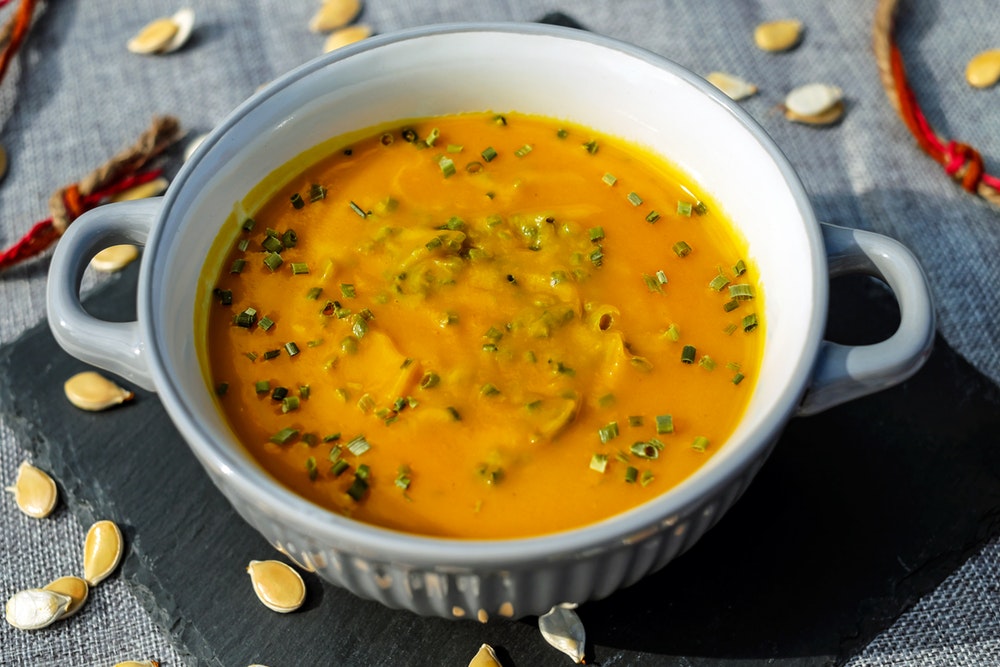
Well, the first day of autumn is just around the bend and the nights will soon be getting much cooler. If you’re like us, it’s time to bust out the blankets and cozy socks and get ready for some hot bevvies and soups to warm our bellies! We’ve shared our favorite hot drinks and soups for healthy autumn nights below!
Garlic Soup
If you’re the least bit under the weather or just need a kick of garlic to set you straight, give Wellness Mama’s Soothing Garlic Soup a shot. (This one isn’t vegan and calls for chicken broth and butter, but you can easily veganize it with some Earth Balance and a veggie or another favorite alternative broth – same with this Delicious and Simple Cushaw Soup— assuming you can find a grocer with a cushaw on hand.)
5-Minute Vegan Golden Milk
Only 8 ingredients and chock full of turmeric and fall spices, this wholesome blend is a super easy new healthy fall favorite of ours!
Simple Healthy Tomato Soup
This is another Wellness Mama concoction and calls for bone broth, but you can select a vegan alternative or make one here.
Easy Peasy Crock Pot Hot Apple Cider
I can’t remember where we got this recipe, but we’ve cut out so much and made it so easy it’s really not even a recipe. Just grab two containers of regular apple juice from the store for a total of about 64 fl. oz. and 6 fresh whole cinnamon sticks (good quality). Put them all in the crock pot and cook on low for 3 hours – delightful hot cider ensues (and your house will smell divine too, just fyi). Some want to sweeten it up even more with extra ingredients, but that makes it far too sweet for us and not very healthy — however, do as you wish! Crock Pot Caramel Apple Cider is a favorite for many.
If you’re vegan and you’re craving some Indian flavors, make this one up real quick. If you’d prefer another choice, Vegan Richa’s also got mushroom soup with chickpea, vegan cream of mushroom, chipotle corn chowder, and vegan curried butternut squash soup.
Vegan Pumpkin Spice Caramel Latte
We love pumpkin spice and we don’t care — especially when it’s veganized! If you don’t want this, grab some Hot Hazelnut Macchiato, or a Vegan Indian Hot Masala Chai.
Sweet Potato Soup with Tomato and Lentil
Green Evi’s got another hot fall evening favorite with this nutritious and colorful creation. Serve it up alongside warm bread or homemade croutons for the win.
Velvety Almond Milk Hot Chocolate
Five minutes to prep and five minutes to cook, this combination of flavors makes any fall night perfect. And PLEASE — go ahead and double up on the recipe – you know you’ll want more than just one cup of this stuff!
All the best of your childhood favorite cream of broccoli soup with a side of adult vegan flair. From beginning to prep to serving bowl, you’ll spend a total of 50 minutes on this one.
Spicy Tofu and Potato Coconut Curry Soup
This one is heartier than the others with a kick of curry. Stir in a little bit of extra veggie stock if need be to thin things out if you find it too thick and chunky.
Chickpeas in Turmeric Peanut Butter Curry
Heavy protein, a pinch of curry, and gorgeous golden turmeric gives this healthy blend its unique flavor and rich color. (This one is thick, too. Thin with veggie broth as needed.)
Vegan and Gluten-Free Indian Chai Tea, Masala Chai
Prep time is five minutes; cook time is ten, for a total of 15 minutes here. Freshly grated/minced ginger root makes this one smell and taste absolutely divine.
Hot and healthy, you’ve got to try this out on a cold evening. Five total ingredients make this a simple delight — with the emphasis on delight! You’ll need a blender and a small saucepan for this one.
I can’t brag about this one enough. Six total ingredients (and one is optional) and a whole cup of freshly chopped ginger root makes this fragrant blend outstanding and perfect for a cold night or a rainy afternoon. The recipe makes one cup of latte, so double it up if you’re having a guest over.
How To Tell If You Have Worms & What To Do About It

If you’ve ever had a pet with worms, you’re a little bit familiar with the nutrient-robbing parasites. What you may not realize is that some of the horrid little creatures can infect humans as well! Let’s take a peek at some of the signs and symptoms of worms in humans and what you can do about them.
Unexplained Weight Loss
If you’re eating the same amounts and types of foods you usually eat and keeping up the same amount of exercise, you shouldn’t be losing much, if any, weight. If you’re consistently losing weight in a noticeable way, keep track of how much and how quickly you’re losing it. Consider seeing a doctor if the problem continues — the problem may very well be that worms are eating the nutrients your body needs.
Abdominal Pain,Discomfort or Gas
This would be especially pertinent if you’ve recently traveled to a new location in a different country or a region known to have parasites. If you’re experiencing diarrhea after taking an anti-diarrheal pill, you may want to talk to your doctor to see about getting checked for worms.
Itchiness, a Rash or Swelling of the Skin
Hookworms enter the body through the skin, and their larvae may leave an itchy red spot, swelling, or rash at the site where they went in. You may also notice hookworm itching in your hands and feet. Pinworms (also known as threadworms) can also leave your skin feeling itchy because of the toxins they release into your bloodstream.
Mood Swings, Sleep Disturbances, Anxiety, Tooth Grinding, Aches in Muscles & Joints
These are all potential problems caused by the toxins pinworms release into the body. In some cases, seizures are even possible. (Note: If you think you may be experiencing a seizure, get medical help right away.)
Dizziness, Memory Loss, Signs of Dementia
Although extremely rare, these symptoms are known primarily to those infected by fish tapeworms. These types of tapeworms can end up consuming so much of the nutrient B12 from your body, they may cause a condition called megaloblastic anemia. The low red blood cell count resulting from this condition leads to the dizziness and other signs.
Pain Caused by Vomiting and Nausea
Tapeworms can also cause blockages in the intestinal walls and openings to the intestines. This kind of pain is typically experienced in the area just above the stomach. Keep careful track of this pain in case a blockage has occurred as this condition can become very dangerous.
Unusually Pale Skin and Eyes
Just as tapeworms steal B12 from our bodies, they steal other nutrients like iron as well. If your eyes and skin look particularly pale to you in the mirror, it may be a sign that your blood level has been reduced due to an iron deficiency. Additionally, keep an eye out for other signs of anemia such as shortness of breath, concentration problems, fatigue, and rapid heartbeat without any other explanation.
Tenesmus, or the Feeling That You Need to Constantly Pass Stools
When your digestive tract becomes inflamed by worms, it may become harder to pass regular stools and end up feeling like you need to pass stools even when your bowels are empty. Cramping, pain in the rectal area, and straining to pass a stool that isn’t actually there are symptoms of this condition.
Feeling Like You’re Never Full or Never Hungry
When worms eat your food, you may still feel hungry even though you just ate recently. On the other hand, they can also make you feel gassy, bloated, or nauseated, which may give the sensation of fullness.
Excessive Fatigue
If you would rather sleep than anything else and it isn’t depression or any other explainable illness, you may have worms. Worms deplete you of nutrients causing extreme fatigue, exhaustion after the tiniest effort, and an overall feeling of sluggishness all the time.
Cramping without Explanation
If hookworms cause colon inflammation or otherwise irritate your intestinal lining, you may start having cramps.
Check Yourself for Worms
Use a piece of tape pressed against the anus a few times or look at your stool or the inside of your underwear carefully for worms. They should be white or resemble tiny pieces of thread. They may or may not be moving.
If you find you have worms, consult your physician and ask about these home remedies for ridding yourself of the critters. Don’t let them stay beyond their diagnosis as they can lead to serious health consequences if left untreated.
Multiple Orgasms for Men: Are They Possible?

Multiple Orgasms: Yes, Men Can Have Them, Too!
It’s a widely held (and erroneous) belief of modern day Western culture that only women can achieve multiple orgasms (the experience of having several non-ejaculatory orgasms in a row during one session of sex play). Turns out men can have them too, and they’ve been doing it for over four thousand years! Whether you’re a guy yourself or the partner of one, chances are exploring this skill will enhance your love life substantially!
So Men Can Have Multiple Orgasms…Okay, But How?
We’ve explored the topic with the experts and found some key concepts to consider. First, it’s time to “unlearn” some untruths. Since men typically have little trouble with sexual response and orgasm, paying close attention to the mechanisms of each is not a common priority. But it’s time to reconsider that. The first item up for a closer look: Breathing during foreplay, sex, orgasm, and the period just following orgasm.
Breathing and Multiple Male Orgasms
Start paying attention to your breathing both during and outside of sexual experiences. This is where a brief introduction on breathing and the expansion of sexual awareness may be in order. Deep, conscious breathing and the awareness of how your breathing changes during the phases of sex (excitement, climax, orgasm, ejaculation) is important for understanding the following concepts. For starters, practice taking three full, conscious breaths in and out and try to continue it while you finish reading this article. Later, try to pay attention to your breathing as often as you can remember. Do you breathe fully during the day? Do you ever unconsciously stop breathing or hold your breath for a short time (usually just a few seconds) intermittently throughout the day? It probably happens more often than you think!
The PC Muscle
Ever heard of it? If you ever stop the flow of urine when you pee, you are using the PC muscle. It’s also a big part of the orgasm experience, so becoming consciously aware of it essential for male multiple orgasms. Squeezing and releasing it can help strengthen the muscle and increase this conscious awareness.
Practice Conscious Awareness During Masturbation
For the next few weeks, pay close attention to each of the following areas whenever you masturbate. The awareness you create will help lead you to having your own multiple orgasms!
Pay Close Attention To:
*when you reach the point of inevitable ejaculation (some men feel a “tingling” sensation right before this)?
*what exactly turns you on?
*what changes occur in your body as you get turned on and then as stimulation increases?
*what are experiencing temperature-wise? are some areas warmer than others, does it move upward or downward or stay the same?
*what types of things happen within your body as you orgasm, just prior to an orgasm, and immediately afterward? what is different about these sensations than those you experience prior to/during/after ejaculation?
Consult Ancient Sexual Techniques from Around the World
There are ancient Tantric, Taoist, Japanese, and Arabian techniques designed for expanding orgasmic pleasure which over thousands of years have developed into the male skill to choose when to orgasm or ejaculate and how to identify the differences in the two experiences.
Ejaculation and Orgasm are Two Unique and Separate Experiences
In Western cultures, most men are not taught to separate the two, so they simply never do. However, ejaculation and orgasm in men are actually very different psychological and physiological experiences — and learning to separate them means learning to have more than one orgasm for each single ejaculation.
Hold Back Your Ejaculation & Have a Few Non-Ejaculatory Orgasms for Each Single Ejaculation
Therefore, multiple orgasms for men does not equal multiple ejaculations. The skill lies in learning how to hold back on the ejaculation and develop the ability to enjoy several non-ejaculatory orgasms. Learning how to work with your body while masturbating can enhance this skill development even better than playing with a partner can. Discovering these new things about yourself and your body is usually eye-opening and fun, even if you decide to go back to your old single ejaculation/single orgasm routine eventually.
Whether You Prefer The Single or Multiple Orgasm Routine, Gaining Awareness is Still Useful
Even if you find multiple male orgasms aren’t as satisfying for you as you’d imagined, building the skills to hold off on ejaculation and identify the differences between ejaculation and orgasm can lead to successes in other areas of life. Branching out into spiritual development from the starting point of working on these skills is also possible. Learning how to become aware of your own body can teach a new and highly beneficial level of mindfulness in all aspects of living.
When Gut Yeast Becomes a Problem
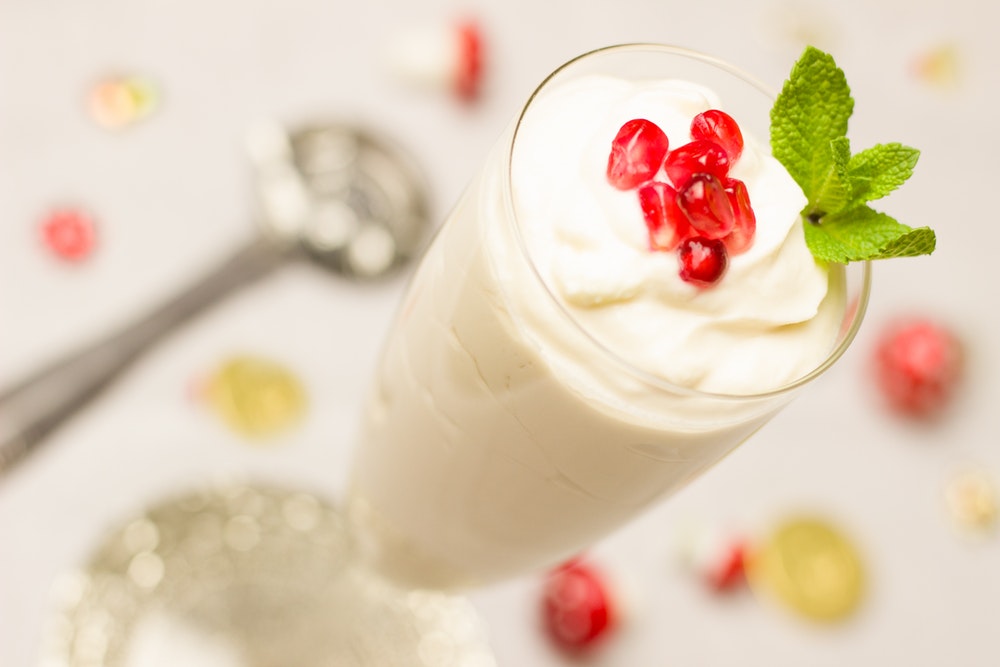
What is gut yeast and how can I tell if I have an overgrowth?
When the delicately balanced ecosystem of “good bugs” and “bad bugs” (bacteria, viruses, and other microorganisms) that busily line our intestines gets thrown out of rhythm, the problem of yeast overgrowth may occur. A diet high in sugar (or other simple carbs) or the prolonged use of antibiotics, steroids, or birth control pills are the most common culprits of this situation, which can lead to a variety of problematic symptoms, chronic illnesses and other disorders.
Take a Simple Yeast Test at Home
Although it may not be considered a full-blown yeast infection, yeast overgrowth can still pose significant problems. According to Dr. Axe, there are some common signs to watch out for (and Dr. Oz shares a handy simple yeast test you can do yourself at home here – not 100% accurate, but still helpful!) and a few easy useful changes you can make if you find your gut is overwhelmed by yeast. Let’s take a look!
Moods Out of Whack
If you’re feeling out of sorts, consider that research is still underway to explain the digestive system’s effects on our brains. Many scientists are curious about the connection and believe that if the gut has issues, the brain very well might, too. Panic attacks, depression, mood swings, anxiety, or other signs of mood disorders are thought to be influenced by yeast, or Candida, overgrowth. Naturopathic doctors have also shared both human and animal studies on the issue, revealing healthy mood balance as linked to probiotic supplementation of the diet.
Tummy Troubles
As you may have expected, another sign of gut yeast overgrowth is a worrisome gut. Gas, cramping, constipation, diarrhea, bloating, or other signs of distress are all clues to a possible imbalance. Candida overgrowth may very well be to blame. Give some of the remedies below a try to see if these issues are alleviated.
Being Super Tired is Not a Super Power
Full-on exhaustion without sufficient remedy that lasts at least as long as six months is possibly chronic fatigue syndrome — and can include such symptoms as brain fog, headaches, and joint pain.
On Again Off Again Infections
Whether they are of the vaginal or urinary tract variety, Candida can lead to frequently recurring and seriously annoying infections. If you keep having them, consider Candida and try some of the options explained below.
Sinus Infections
Yep, sinus infections can also be a sign of Candida — including the fun of sore throats, allergies, post-nasal drip, congestion, and other symptoms.
In addition to these, Dr. Oz breaks Candida signs down further into the following possible issues:
menstrual irregularities not otherwise explained, heightened food/chemical sensitivities, eczema, psoriasis, decreased immunity, irritable bladder, irritable bowel syndrome, decreased libido, thyroid dysfunction, toenail fungus, and cravings for yeast or carb-rich foods
So How Can We Fix This?
First, check your diet.
Since yeast is dependent upon certain things for its survival, starving them out is very possible. Yeast loves sugar — and needs it. Cutting the sugar out of your diet as much as possible will remove the yeast’s favorite food source, leaving them malnourished and on their way out! Of course, cutting the sugar out is never easy in our society since everything seems to contain hidden sugar — but give it your best shot. Make sure never to add sugar to anything (yes, you can enjoy cereal without sugar sprinkled on it), cut carbs as much as you can, and check labels for fructose, glucose and other -ose forms, the clever cousins of regular sugar.
So Eliminate These:
Eliminate as much as possible of sugar and sweets of all kinds, breads, vinegar and foods containing vinegar, peanuts, and sweet fruits like dates or bananas.
And Add These:
Get probiotic food into your body. Grab yogurt, kefir, and kombucha. Also, incorporate fermented foods like miso, sauerkraut, natto, and kimchi into your diet. Add fiber-rich foods like fruits, veggies, flax and chia, wild-caught fish and avocado. Add fresh garlic to your diet wherever possible as it will kill Candida with its anti-fungal properties. Turmeric and coconut oil will do the same.
Quit Drinking
Leave the alcohol alone for while, or at least decrease your consumption as much as possible. Alcohol contains sugar, which, as you now know, is a favorite food of Candida.
Talk to Your Doctor about Antibiotics
If you’ve been prescribed antibiotics in the past, they may have killed off the healthy bacteria in your gut, leaving yeast to take over control. This is not a good condition for your body, so be sure to add probiotics as much as you are able in order to counteract the effect. If you’re currently on antibiotics for an infection, you may need to finish the prescribed amount before stopping in order to kill the infection. Please talk to your doctor about your options.
Get Enough Sleep
Sleep is a necessary function of life. Make sure you turn off all your devices at least two hours before bedtime — no more late night scrolling on social media!
Get Exercise and Practice Meditation
Sufficient exercise and relaxation are also essential. Get into a walking, biking, or swimming routine, or try a little yoga. Daily meditation time and stretching before and after exercise is important as well.
The Superfoods You Need in Your Life – Some May Surprise You!
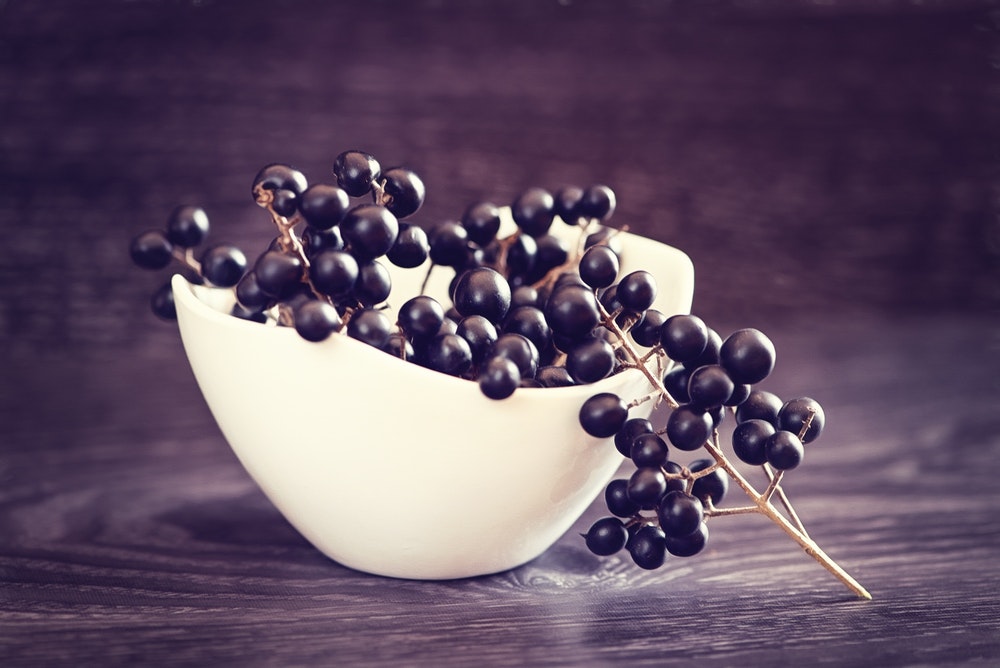
What is a “Superfood?”
Dr. Oz describes his favorite superfoods as “short on calories and dense in nutrition.” Although some so-called “superfoods” may or may not always contain the powerful nutritious punch their advocates suggest, others are highly recommended by doctors and nutritionists alike. We’ll examine the benefits of each of Dr. Oz’s (and some of Dr. Axe’s, WebMD’s, and other sites’ favorites) recommended superfood list, which is as follows:
Garlic– According to an interview with NaturalNews, Director of North American Institute of Herbal Medicine Paul Bergner states that “garlic is anti-parasitic, anti-fungal, anti-bacterial, and anti-viral, as well as anti-protozoan,” which Bergner backs up with tests showing garlic to be more effective than penicillin and tetracycline — without the side effect of destroying gut flora. Prevention of cancer and promotion of a healthy cardiovascular system put the icing on the cake with this superfood!
Olive Oil – Popular for its anti-inflammatory and antioxidant qualities, olive oil is full of monounsaturated fats which lower the body’s risk of heart disease, promote good cardiovascular health, help regulate blood sugar, as well as helping to prevent cancer and bone loss.
Cruciferous Vegetables– WebMD agrees, naming cruciferous veggies as “super-veggies” due to their fiber, vitamin, and disease-fighting phytochemical constitution. According to Oz, upping your intake of broccoli, Brussels sprouts, and cauliflower can help the body detoxify the liver.
Walnuts– Heart-healthy and rich in rare essential Omega 3 fatty acid or polyunsaturated fatty acid, walnuts are a great source of protein, dietary fiber, Vitamins E and B6, folate and thiamin. These help lower the cholesterol and triglycerides. Dr. Mercola agrees, and adds that walnuts can help prevent both breast and prostate cancer, support a healthy brain, and improve sperm quality.
Apples – Considered by many to be the “first superfood,” apples are easily remembered by their famous rhyme, “An apple a day keeps the doctor away.” Doctors agree, too! According to Organic Authority, apples contain phytochemicals and antioxidants like catechin, quercetin, phloridzin, and chlorogenic acid — all of which contribute to lowering the risk of diseases like cancer, cardiovascular disease, and other illnesses.
Blueberries – Blueberries are rich in flavonoids, a natural compound that protects the brain’s neurons from oxidation and inflammation. According to Dr. Oz, blueberries contain the highest antioxidant content of all the berries.
Dark Chocolate – Dr. Axe agrees with Dr. Oz on the benefits of dark chocolate, the ideal composition of which includes at least 70 percent cacao or cocoa. This formula is rich in flavonoids, antioxidants known to lower blood pressure, free radical fighting and heart health improving power.
Green or Black Tea– WebMD agrees with Dr. Oz on this one, citing a Japanese study on green tea “found that men who drank green tea regularly had lower cholesterol than those who didn’t. Researchers in Spain and the United Kingdom have also shown that ECGC can inhibit the growth of cancer cells.” Quoting Ann Kulze, MD, of Charleston, S.C., WebMD shared that, “The overall antioxidant power of black tea is the same as green tea,” says Kulze, “but green tea does have ECGC, a powerful antioxidant that we really do think is quite special.”
Turmeric – Though not on Oz’s list, many nutritionally aware folks of the day swear by turmeric’s numerous health benefits enough to call it a superfood. Full of curcuminoid polyphenol antioxidantswhich cause its rich yellow color, turmeric is known for reducing inflammation and oxidative stress as well as helping to stabilize blood sugar. Not sure how to integrate turmeric into your family’s diet? Check out some of these recipes to up the yellow stuff on your plates and in your cups today.
and last but not least…
Cockroach Milk– Yep, you read that right. In anticipation of potential food shortages some believe the world may eventually face, the milk of the cockroach may soon near the top of the superfood list. A team of researchers from India recently studied the nutritional value of the substance and found it to be among the most nutritious on the planet. Packed with protein and a much lower detrimental effect on the environment, some believe cockroach milk may end up in our diets of the future.
- As with all my articles, please consult your physician before attempting to change your diet as recommended here in order to make sure such a shift is right for your body or household.
The 7 Most Popular Uses of Tea Tree Oil
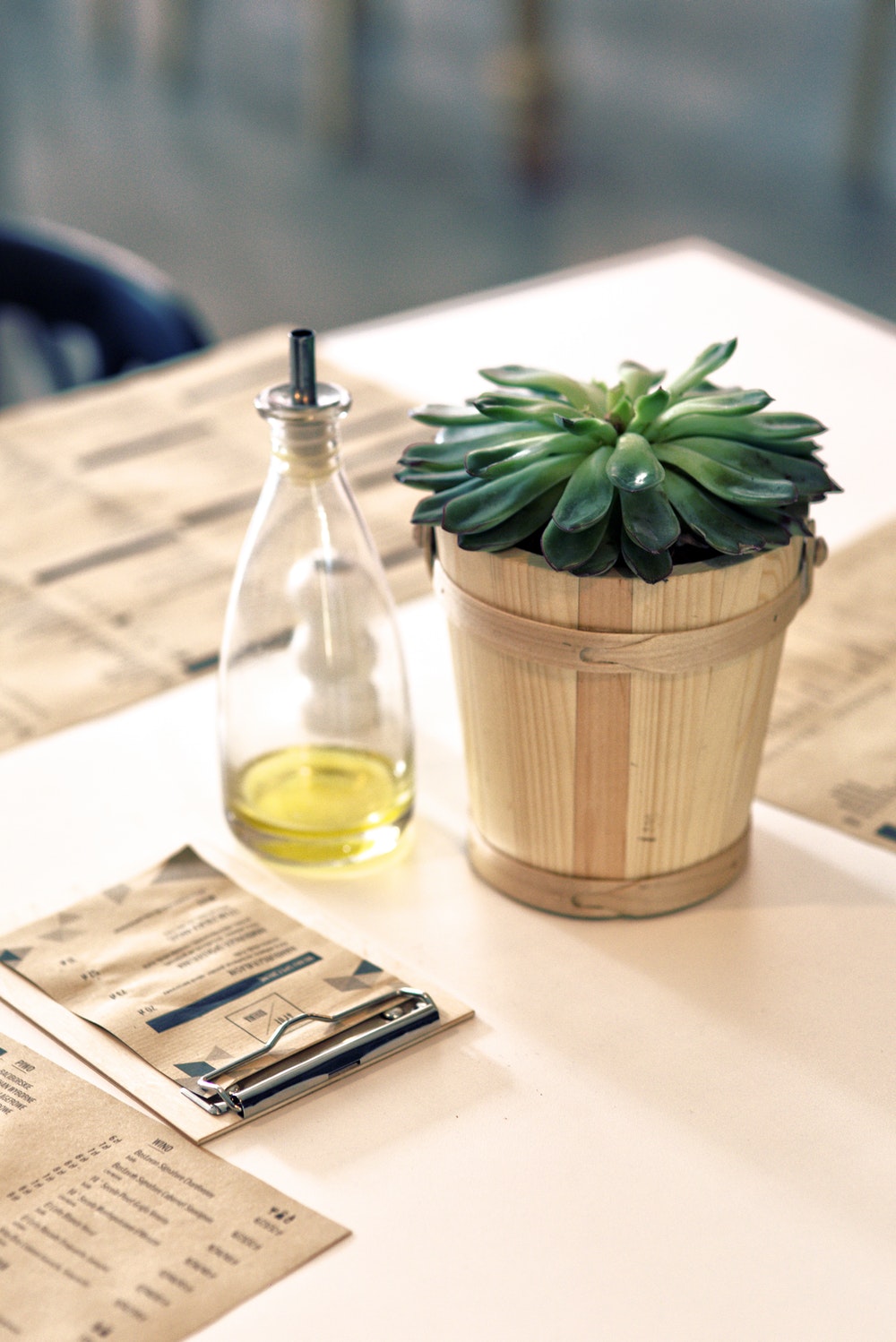
What are the Most Popular Uses for Tea Tree Oil?
Known for its strong, unique aroma, Wikipedia describes tea tree oil as, “…also known as melaleuca oil or ti tree oil, tea tree oil is an essential oil with a fresh camphoraceous odor and a color that ranges from pale yellow to nearly colorless and clear. It is taken from the leaves of the Melaleuca alternifolia, which is native to Southeast Queenslandand the Northeast coast of New South Wales, Australia.”
Where can I get it?
Sold in its purest form in health food stores and grocers throughout the United States, tea tree oil is usually suggested for use after being diluted. Interested folks can also purchase many brands of tea tree oil online, and average prices fall around $9 or $10 for 15 ml. Look for the 100% pure plant-based essential oil.
Australian Aboriginees Have Used Tea Tree Oil Medicinally for Decades
Native to Australia, it’s no surprise that Aboriginal Australians have been using the crushed leaves of the Melaleuca tree for ailments over many decades. Numerous benefits attributed to the tree’s oil have been noted in modern times, both among the Australian Aboriginees and citizens across the world. Let’s take a look at some of them, as well as some of the more unusual uses.
There are Many Uses, All of Them External (Never Ingest Tea Tree Oil)
For starters, many find tea tree oil to be effective in treating head lice, helping wounds heal, soothing irritated or itchy skin from sunburn and insect bites, relieving scalp itch, dandruff and/or psoriasis, treating bacterial, fungal, or viral infections including but not limited to staph infection and athlete’s foot.
Some also swear by its household cleaning superiority, used as a disinfectant or mold remover.
Let’s take a peek at its most popular uses in modern times.
An Effective Acne Treatment
Many swear that tea tree oil is an exemplary acne treatment, using a five percent solution instead of drug store brands with benzoyl peroxide. Diluted within witch hazel or another recommended carrier and then applied directly to the acne with a Q-tip twice daily at the most, tea tree oil has been said to clear acne. Use sparingly and avoid when skin becomes dry.
A Stellar Insect Repellent
Mix up this recipe for an effective spray-on insect repellent safe for use on both kids and adults.
You can also use it on pets, plants, and around the household to get rid of pests (just be sure to adjust the recipe for each different use first)
A Superior Head Lice Treatment
It’s back to school time and the lice, they are a travellin’! Lice love to travel between heads, hats, scarves, and other clothing, and they can crawl FAST. Prevent them from being attracted to your kids’ hat, hair, (or treat/prevent re-infestation) by using this tea tree oil lice treatment.
An Excellent Cleaning Solution
Prepare to clean virtually every surface in your home and car safely and chemically-free with tea tree oil using one of these outstanding recipes for cleaning solution.
Freshen Up Your Laundry
Add a few drops of tea tree oil to an empty wash cycle on hot to freshen your washing machine up. For the dryer, add the drops to a thick washcloth or wool dryer ball and toss into the dryer instead of a chemically-scented dryer sheet. This will clear out any damp or mildew smell lingering in the region.
A Gentle Makeup Remover
Try this recipe for a homemade tea tree oil makeup remover. Be sure to store the finished product in a glass jar or other type of glass container instead of metal and secure a tight lid on top. Be careful to keep the mixture out of the eyes.
Fight Ticks and Fleas
Some have had great luck with pouring a few drops on the outside of their pet’s collar (consult a veterinarian before applying to pet’s skin or fur please) or into their crate to repel fleas. Others swear a few drops on a Q-tip applied to a tickcauses them to leave their burrowing and head elsewhere!
*Please note: Tea tree oil is for external use only. Do not ingest in any form. (Some recommend use as a sore throat spray, etc., but please consult your physician first.)Tea tree oil can dry out your skin and make you more sensitive to UV rays, so avoid sun exposure if using it. Also, as with all my articles, please consult your physician before attempting to use this or any other suggested remedy to make sure it’s right for your body or household.
Why Dry Brushing Your Body is Healthier Than You Think

While many have been dry brushing for years already, others are new to the idea. Why would someone want to brush their skin instead of using soap on a washcloth?
Some use soap only in the private zones and brush everywhere else, while others soap up to a healthy lather everywhere after dry brushing first. It’s up to you how you go about it. Most, however, prefer to brush in the morning to get the circulation going and prep the body’s systems for a busy day!
Dry Brushing Aids Several Bodily Systems
Some advocates of dry brushing the body swear by it and believe that it not only stimulates the skin and feels great, but that it also acts as support for the lymphatic system, exfoliates the dead skin cells, cleans the pores, helps detoxify the body, strengthens the immune system, aids digestion, improves the functioning of the nervous system, tightens the skin, wards off premature aging of the skin, stimulates the hormones and oil-producing glands, gives an energy boost, tones the muscles, and even helps minimize the appearance of cellulite. Let’s check out and how it’s done and what the details are on these claims!
First of all, dry brushing should only be done with a naturally-bristled brush with soft fibers and preferably a long handle. Most believers spend from five to fifteen minutes dry brushing their skin daily, or at least twice weekly, and recommend working the brush toward the direction of the heart or toward the center of the body (matching the direction of the lymph system. They stress that the practice should never hurt, and to reduce pressure on the brush if it does. Start with a gentle brush and work up to a firmer bristle gradually as you grow accustomed to the practice. Females are advised to avoid brushing the breasts.
Dry Brushing Helps Detoxify the Body by Stimulating the Lymphatic System
Since the skin is considered one of the largest eliminative organs and greatest detoxifiers of the human body, some believe it’s important to dry brush the skin regularly and rid our exterior surface of any dead skin cells, toxins or impurities clogging up the pores or otherwise decreasing the efficiency of its detoxifying properties. Some believe that if the skin isn’t kept sufficiently detoxified to allow it to do its job, all of the eliminating work falls to the kidneys, which can become overwhelmed. The lymphatic system runs just along the inside of the skin as well, so advocates insist that dry brushing stimulates the lymph nodes and also helps aid detoxification of the body. Clearing the pores (even the smallest ones) helps the skin continue to do its job and makes you look great, too!
Dry Brushing Gives Tired or Sluggish Folks an Energy Boost
The science isn’t in yet, but many advocates state that dry brushing somehow gives them more energy. Some theorize that its circulation-enhancing abilities are to blame. This is why some recommend only dry brushing in the morning or early afternoon, not in the evening, as it may actually end up keeping you awake!
Avoid Sensitive Areas, Wounds, Infections, Rashes, etc.
Make sure to brush around any areas of rash, wounds, or other sensitivities in order to allow healing and avoid spreading.
Give It a Try Using a Video or Pictorial Demonstration for Guidance
Here is a brief, simplified video demonstration of dry brushing for those who are new to the practice. Wellness Mama suggests a slightly different approach, beginning with the bottoms of her feet, gradually moving upward on the legs with ten brushes on each part of the body. She continues with the palms of the hands and up the arms toward the heart, then in a circular clockwise motion on the abdomen and underarm areas. She repeats the process on her back and finally her face, using a different, gentler brush on the facial skin.
After your Shower, Massage in a Pure Plant Oil
Choose from avocado oil, apricot oil, or almond, coconut, sesame, olive oil or cocoa butter to massage gently into the skin following your shower.
You’ll want to clean your body brush using soap and water at least once weekly to keep it fresh and toxin-free.
- As with all my articles, please consult your physician before attempting this practice to be sure this type of regimen is right for your body or household.
The Top Magnesium-Rich Foods for an Increasingly Deficient World
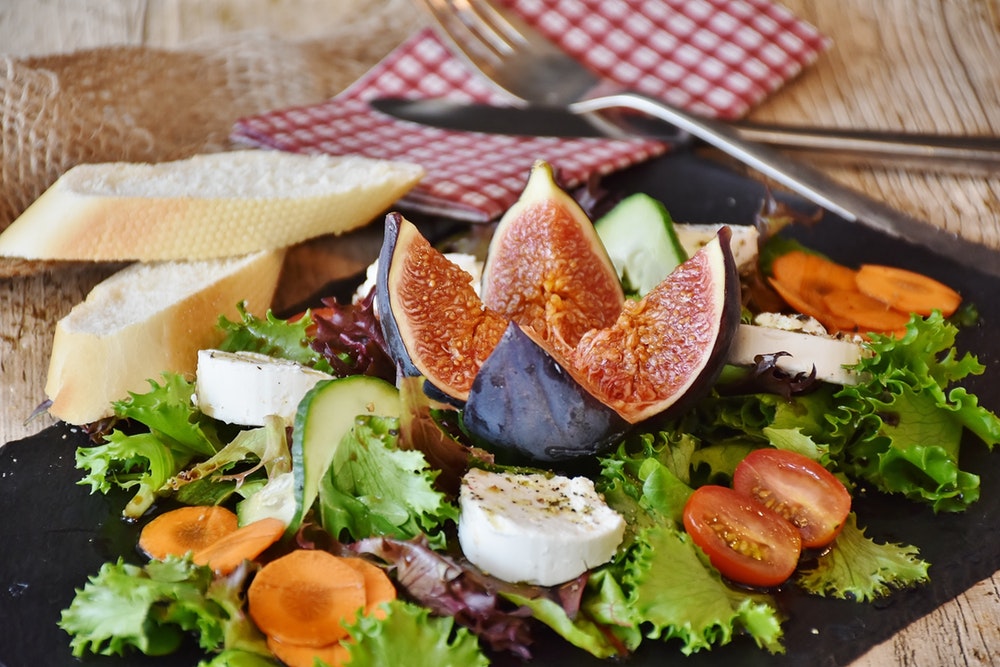
A Widespread Worldwide Magnesium Deficiency is Growing in Awareness
Some estimates suggest that almost 90 percent of humanity may be magnesium deficient. But how could that be true? According to Wellness Mama, only the populations closest to the oceans are likely to get enough magnesium, since the seas and surrounding land/water are usually sufficient in the nutrient. However, elsewhere, depleted soil conditions lead to magnesium-depleted plants and then the animals which eat the plants are also low on magnesium. Of course, the humans who eat the plants or animals are then, in turn, magnesium deficient as well. Stress and the consumption of sugar and caffeine also contribute to the depletion of magnesium in our bodies. Since our bodies need magnesium to effectively conduct protein synthesis, neurotransmission, blood pressure regulation, and efficient blood sugar control (among numerous other processes), getting enough of it should be a high priority. Check some of the Mama’s signs of deficiency out here.
Whether you’re officially deficient or not, getting a little extra magnesium into the diet is likely a good idea for most of us. See if you can find and include these magnesium-rich foods in your family’s diet:
Spinach, chard or many other green leafy veggies
Tossing a little spinach into a vegetable salad or even cooking it on the stove (we strain ours and top it with a splash of vinegar) can help add a little more of it to your diet. Green leafies on top of sandwiches or underneath a scoop of pasta salad can also enrich your dishes both nutritionally and artistically. Spinach and mushroom pizza is usually a win with any hungry crew. If you’re at a loss as to how to integrate more spinach, chard, or leafy greens into your life, give Vegan Richa, Minimalist Baker, or Green Evi food blogs a quick search with the desired food as search criteria. Here’s a great-looking recipe for Vegan Richa’s Spinach Florentine Casserole, for one example.
Pumpkin Seeds
It’s about that time! Be sure to save the seeds from your carving pumpkin this fall to roast them up fresh! You can salt or sweeten them up, sprinkle them on salads or add them to your favorite granola or trail mix recipe, like this one.
Almonds
These are delicious whole and raw, straight out of the tin. Or maybe you prefer slivered almonds over a salad (toss them onto a spinach or a figgy melon salad for a double helping of magnesium), or some almond butter on your sandwich instead of peanut butter. Pears and almonds go together well in salads and pastries, while Game Day snacks can easily incorporate almonds into a flavorful blend like this Spiced Nut Mix.
Avocado
Slice it up beside almost anything, spread it over toast, or make some homemade guac. If you’re interested in something sweeter, I recently wrote about some indulgent avocado desserts here as well.
Dark Chocolate
From health food store candy bars, cookies, biscotti, cake, and brownies to even a decadent dark chocolate and red wine fondue, the options are endless for this magnesium-rich delight!
Figs
If you’ve never tried anything with figs besides Fig Newmans, it’s time to branch out a little! These are pretty little fruits when sliced up, so you’ll often find them adorning the edges of cakes and tarts, or showing up against the glass in a jar of almond milk chia fig pudding. Double your magnesium dose when you dip them in dark chocolate here. Make some tasty fig maple preserves for your toast and pancakes or mix a little with your next fruit salad and cucumbers for this lovely Fruit Salad with a Twist recipe.
Mix Them Together for A Tasty Original Blend
Mix and match these foods with your favorites to easily incorporate them into your diet. If you’re still at a loss, try plugging the desired ingredient into the search field at Foodgawker.com to find an assortment of recipes to suit your tastes.
Since this recipe features several of the above-named foods (including spinach, figs, and avocado to boot), getting a few these salads onto your table should do the trick in upping your family’s magnesium levels: Don’t skip this Fig Spinach Salad recipe. This mouth-watering Watermelon Avocado Spinach salad with Poppyseed Dressing features spinach, avocado, and almonds aside watermelon too, and this Ultimate Green Smoothie Bowlintegrates much of the same with sliced up bananas as well — another great magnesium-rich food!
5 Herbs for Easy Peasy Use at Home

If you’re ready to try a few herbs out to see how they work for you, we recommend starting with these.
Of course, a doctor’s care is always essential to make sure you’re making the right decisions for your body and household, so consider that before using anything recommended here. Also, herbs can be quite potent (sometimes even more potent than a prescription alternative!) so make sure you consult the current research and packaging instructions (if you purchased a pre-packaged herb) before you take anything. It is possible to take too much of a good thing, so always keep that in mind too! Like with many things in life, a little goes a long way with most herbs. If you’re unfamiliar with essential oils, please consult the packaging on those as well, since most are best used after dilution.
Whenever you’re ready, grab some of these for starters:
Peppermint
Whether you need some itchy eye relief, want to soothe sore muscles, or need to clear the spiders out of your home, peppermint is versatile and simple to use!
For a warm eye compress, grab a couple of peppermint tea bags and follow Dr. Oz’s instructions here.
For sore muscles, clearing the sinuses, alleviating joint aches, calming hyperactivity, or assisting with numerous other ailments, get some peppermint essential oil and check out Dr. Axe’s suggestions here.
Tired of spiders popping up around the house? Here’s a recipe for a minty spider repelling spray that should do the trick! (Note: This may bring the spiders out from their hiding spaces before it begins to repel them entirely from the premises.)
Oregano
It’s not just a tasty spaghetti sauce seasoning anymore! Oil of oregano, known as a natural antibiotic (as well as anti-microbial, anti-viral, anti-fungal and antibacterial) to many, this wildly beneficial substance can be used both internally and externally.
Since it strengthens the immune system as well as alleviating respiratory issues, aiding proper digestion, and easing the treatment of wounds, oil of oregano is currently being analyzed by scientists as to its official study-proven benefits. It has even been used by companies including Perdue (in addition to rosemary and thyme) to lessen their dependence on prescription antiobiotics in their fowl.
Wellness Mama keeps some of the oregano essential oil on hand at all times (used after diluting with coconut oil) for such ailments as ringworm, athlete’s foot, sore muscles, and treating warts.
Rosemary
Rosemary is immensely beneficial, containing minerals like iron, magnesium, folic acid, vitamin A, and vitamin C, while also being a natural anti-inflammatory, anti-fungal, antiseptic and anti-allergic herb.
The fresh herb infused in oil has been proven effective for treating eczema, dandruff, rubbed into the belly or abdomen for PMS symptoms or indigestion (do not use if pregnant please), and an effective pest repellent.
Side note: We used a couple of sprigs of fresh rosemary in our Christmas potpourri last winter, and I can tell you from experience that it smells DIVINE (and a lot like pine) when simmered beside a little candied ginger, cinnamon, cloves and orange peels…for best results, just try this simmering potpourri recipe from Half-Baked Harvest — we used the rosemary instead of a pine branch snipping in ours.)
Ginger
Get some of this fresh root into your kitchen STAT! Aside from its better known anti-nausea and digestion-stimulating effects, ginger is also anti-parasitic, anti-viral, anti-bacterial, pain-relieving, and anti-inflammatory. It’s been said to be effective in treating diabetes, asthma, infections of various types and alleviating motion sickness, as well as a tough cancer-fighter.
Don’t be afraid to use fresh ginger in place of ground in your favorite recipes (you’ll likely need to use less of the fresh than the ground to do the trick with most recipes. We love to peel a tiny pinch of it, crush it up, and add it to our fruit smoothies for a little kick – it’s delicious and smells heavenly!) and be sure to choose the right root — consult this guide for best results.
And finally, if you’ve got a hankering for a hot autumn beverage and a you have enough of the fresh root on hand, give this super easy 3-Ingredient Ginger Tea Latte recipe from Minimalist Baker a try — it will not disappoint!
Garlic
An ancient remedy for countless ailments, garlic is a must-have-at-all-times for every kitchen. Aside from its usefulness as a delicious additive to many types of cuisine worldwide, garlic is also known for boosting the immunity, improving cardiovascular health and circulation, reducing inflammation, and fighting several types of cancer.
Try to use freshly crushed cloves of organic garlic in as many of your recipes as possible, or if you need an idea, here’s one for Wellness Mama’s garlic soup.
Mountain Rose Herbs touts this miraculous substance as, “Garlic has been used medicinally, and as a culinary ingredient, for over 5000 years. World folklore is littered with references to its ability to protect us…The Greeks used it extensively…The first medical textbook known to have discussed the use of garlic in medicine was the Collection of Commentaries on the Classic of the Materia Medica (Ben Cao Zhing Zhi Ju), written over 1,500 years ago.”
